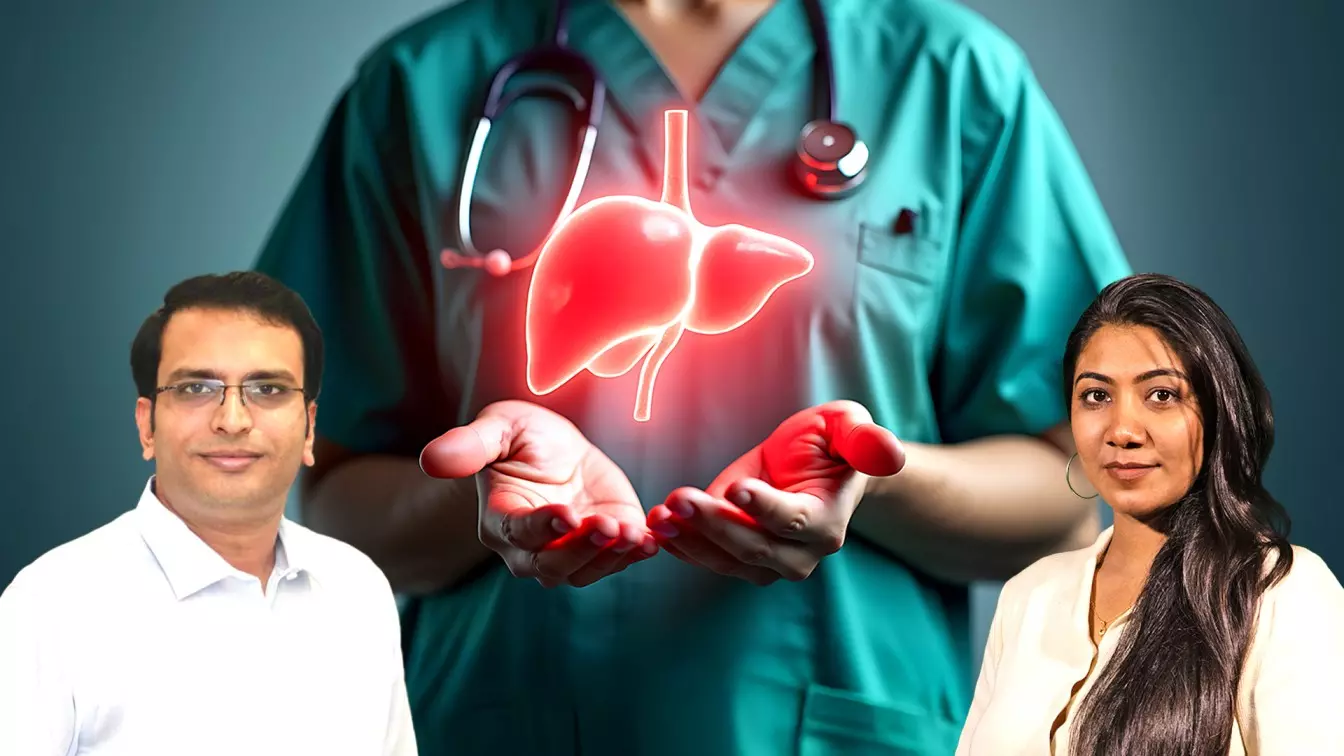
60 pc of liver cancer cases preventable, but conditions apply: Medical gastroenterologist
Dr AK Kaushik says early diagnosis, awareness on hepatitis B and C and MASLD and strategies to discourage alcohol consumption are a must to stop cases from doubling by 2050

A recent Lancet study revealed that 60 per cent of liver cancer cases globally could be prevented by addressing key risk factors such as alcohol consumption, viral hepatitis, and Metabolic Dysfunction-associated Steatotic Liver Disease (MASLD). With liver cancer projected to nearly double by 2050, the report underscores the urgency for lifestyle and policy interventions.
In light of the findings, Dr AK Kaushik, consultant, medical gastroenterologist, SRMC, talks about the key causes of liver cancer, ways to diagnose and beat it, and why the cases could rise exponentially if risk factors like alcohol, viral hepatitis, and MASLD are not addressed on an urgent basis.
Also read: Here's how you can prevent non-alcoholic fatty liver disease
From fatty liver to cancer
Explaining the gradual progression of a liver disease, Dr Kaushik says it typically begins with fatty liver, which often goes unnoticed. If unchecked, this condition advances to fibrosis, cirrhosis, and finally liver cancer, he says.
“When we diagnose this early in the first or second stage, the liver has the highest regenerative capacity. The liver disease can be completely reversed to normal,” Dr Kaushik said.
However, due to the asymptomatic nature of early stages, many patients are diagnosed only at stage three or four—when symptoms like jaundice, blood vomiting, or swelling appear. This makes early voluntary screening critical.
Alcohol the prominent cause
Among the key causes, alcohol stands out as the most common, followed by viral hepatitis (B and C), and MASLD. Dr Kaushik warns that liver cancer cases could rise from 870,000 to 1.52 million annually by 2050 if trends persist.
"The most common cause is alcohol...The second is viral—hepatitis B and C. The third important cause is MASLD," he added.
Also read: Dangerous diets: How social media misinformation can turn fatal
A liver-protective lifestyle, including 10 per cent body weight loss, healthy eating, and avoiding alcohol and processed foods, is strongly recommended. Patients with diabetes and obesity are particularly vulnerable, he says.
Obesity and diabetes
MASLD is a fast-growing cause of liver cancer linked to diabetes and obesity. The liver accumulates fat slowly and silently in these patients. Over time, these fats secrete chemicals that damage liver cells, leading to fibrosis and eventually cancer.
"People with diabetes and obesity are vulnerable... This process happens very slowly and silently," Dr Kaushik explained.
Screening with fibroscan for liver fibrosis is advised for such individuals. Lifestyle change is the most-preferred way to beat it.
Also read: Obesity alert: India rolls out oil and sugar boards at snack stalls
Vaccination and awareness
The Lancet report stresses the importance of screening and vaccination, especially for hepatitis B, which has a 98–100 per cent protection rate. While there’s no vaccine for hepatitis C, effective treatment is available.
"Public knowledge about hepatitis B and hepatitis C is very limited. We have to create awareness about these viral diseases in public," said Dr Kaushik.
Awareness campaigns, hepatitis B vaccination, and routine screening can significantly reduce the burden of viral-related liver cancers.
Public health and alcohol policy
Alarmingly, alcohol-related liver cancer is projected to rise from 18.8 per cent to 21.1 per cent by 2050. Public health strategies must evolve to discourage alcohol use and educate citizens on its long-term risks.
Also read: Should homeopathy, ayurveda specialists be called ‘doctors’? The great medical divide
"Alcohol accounts for 20 to 30 per cent of liver cancer mortality. Binge drinking and daily consumption should be avoided,” says Dr Kaushik.
He proposes including health warnings on bottles, expanding de-addiction centres, enhancing early diagnostic services, and raising the legal drinking age. These steps could meaningfully curb alcohol-induced liver disease.
Also read: What is Mind diet? Here is what foods you should put on your plate
The message is clear: 60 per cent of liver cancers are preventable, but change must begin with individual and systemic action. Get vaccinated, screen regularly, control lifestyle diseases, and cut down on alcohol consumption.
The content above has been transcribed from video using a fine-tuned AI model. To ensure accuracy, quality, and editorial integrity, we employ a Human-In-The-Loop (HITL) process. While AI assists in creating the initial draft, our experienced editorial team carefully reviews, edits, and refines the content before publication. At The Federal, we combine the efficiency of AI with the expertise of human editors to deliver reliable and insightful journalism.

